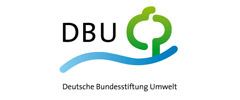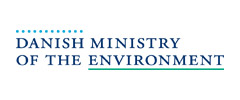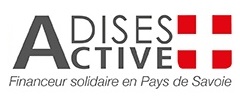CSD 18: Almoustapha Alhacen reports on uranium mining in Niger
During the 18th Session of the UN Commission for Sustainable Development (CSD) in New York, during which mining and waste in its current 2-year cycle was addressed, WECF invited Almoustapha Alhacen, President of t AGHIRIN’ MAN (Niger) to present the situation on uranium mining in Niger
21.05.2010 |WECF Report
Almoustapha Alhacen was born 1957, in the district of Arlit (Niger). He has been working as an operator in the uranium mines since he was 21. Due to uranium mining, the initial vegetation and wild animal species have disappeared from the surrounding area, and premature and unknown diseases have developed among uranium miners, not mentioning the lack of awareness of workers and the general population on protection measures against radiations. In 1999, Almoustapha Alhacen set up the association AGHIRIN’MAN to defend local populations’ rights to health and environment protection in the uranium mining region.
Uranium mining in Northern Niger
Uranium mines are located in the district of Arlit, in the Adagez region (Northern Niger). Since the beginning of uranium mining in 1969, the population of the Arlit district has grown from 20,000 to 140,000, most of them concentrated in the city of Arlit. Originally, the region was home to wildlife, big trees, and farming and agriculture were the main activities. Uranium mining in Niger first began in 1969. From 1969 to 2009, around 100,000 tons of uranium have been mined by the companies, property of the French group AREVA. In 2009, a third company has been set up for the purpose of uranium mining in Imouraren, one of the biggest uranium mine worldwide.
Health and environment impacts of uranium mining
Until the 90s, miners have been kept unaware of the danger of radioactivity for health. At this time, first suspicious premature deaths, due to unknown diseases, began to occur among miners: but no professional disease was ever diagnosed – health inspection among workers is only effective since 2007. Besides the mines, where huge trucks are used, nearby plants for uranium transformation use chemicals to increase the uranium concentration in the concentrate to be shipped to Europe. Besides miners, the local population suffers a lack of wood and land for cattle and agriculture, and the use of uranium-contaminated water results in diseases such as typhoid around Arlit.
Environmental consequences are also dramatic, since original wildlife and vegetation have disappeared and the climate is getting even dryer, due to human pressure and release of radioactive dust and gas from uranium treatment plants.
Water, air and soil contamination
In a country like Niger, where water resources are originally limited, uranium mining means both a contamination and a reduction of available water resources: Areva pumps non-renewable underground water resources in Tarat, which are used by the local population, not aware of their contamination by radioactive materials, heavy metals and chemicals.
Measurements by the CRIIRAD, a French independent laboratory for research and information on radioactivity, revealed in 2003 that radon, the radioactive gas released at the surface to reduce lung cancer risk among workers, contaminated the ambient air tens of kilometers around. In the environment, radon evolves into radioactive heavy metals which are inhaled by the population and increase lung cancer risk. Measurements conducted by Areva itself assessed an annual level of contamination above health recommendations for part of Akokan inhabitants.
Radioactive dust from mining, uranium treatment plants and radioactive stockpiles outdoors contaminate the air and even the soil around the mines. Respiratory diseases are the first cause of morbidity in Arlit, and ear and eyes infections are on the increase, due to the dust and the noise generated by mining activities.
Radioactive waste disposal: toxic tailings outdoors
Radioactive waste from uranium mining results in very radioactive tailings which contain highly radioactive heavy metals – other than uranium. And yet these toxic tailings are taken from the plants and left outdoors, resulting in “mountains of waste” easily spread in the air, since they are made of a particularly radioactive fine sand. Today, the two existing stockpiles of radioactive waste amount to some 30 million tons.
Other radioactive solid waste is also to be found in the city of Akokan: the waste is not even buried to limit wind erosion. According to Greenpeace measurements, high levels of radioactivity are still to be found in several “hot” spots which Areva did not check and clean up properly.
Even in front of the hospital of COMINAK (one of the uranium mining companies), radiation levels are 100 times above normal levels. This seems to be due to the use of radioactive waste to restore roads.
Accidents of uranium transports
In Niger, the conditions of security of uranium transport remain very bad, with passengers sometimes sitting on uranium barrels. In January 2004, an accident of transport resulted in 5 deaths, and radioactive material was spread on the roads. Despite repeated demands from the National Radioprotection Center of Niamey, the total decontamination was only completed one month later.
Uranium mining consequences on the climate and on energy resources
The energy used for uranium mining and uranium transformation is non renewable and generates greenhouse gases. The electricity needed is produced by a coal power plant, located 180 km from the mines, in Tchirozerine, where the local population suffers from the pollution linked to this power plant (black deposits on the soil, etc.). Gasoil consumption for trucks and mines is also very huge. For example, in 2002, according to COMINAK, 9.7 tons of Oil Equivalent (TOE) were necessary to produce 1 ton of uranium, to which must be added the consumption of 3,799 tons of sodium chloride, 11,768 tons of sulfur, etc.
Economic consequences of uranium mining
Despite a production of 40,000 tons of uranium in 40 years, the 12 million inhabitants of Niger remain one of the poorest populationsworldwide. Even in the towns of Arlit and Akokan, one can easily measure the misery of the population, which lacks basic electricity, water, etc. In 2006, the price of uranium mined in Niger was 36 Euros per kg, far below the 150 Euros per kg on the international market.
Difficulties faced… and first signs of improvement of the situation
From 1969 to 2000, there were none environmental and health citizens organizations in Northern Niger, which is additionally a very remote area. AGHIRIN’MAN is the first civil society organization in the region. The French company Areva has so far proved to be opposed to the actions of civil society and foreign NGOs (Criirad and Sherpa) on the field. Workers and members of civil society organizations have to face repeated attempts of discredit by Areva.
Related News
Meet the Winners of the Gender Just Climate Solutions Award at COP24
On the 70th anniversary of the Universal Declaration of Human Rights, we awarded Gender Just Climate Solutions Winners at the climate negotiations in Katowice, Poland
11.12.2018
Invitation: Gender Just Climate Solutions Award 2018
10 December, COP24 Katowice
04.12.2018
Getting to the Future We Want
4-7 November, Brussels: European Environmental Bureau’s (EEB) Annual Conference
12.11.2018
GoodFood4All
WECF and partners all over Europe start GoodFood4All Campaign
06.11.2018
#Ruralwomen: join our Women2030 campaign!
15.10.2018






































